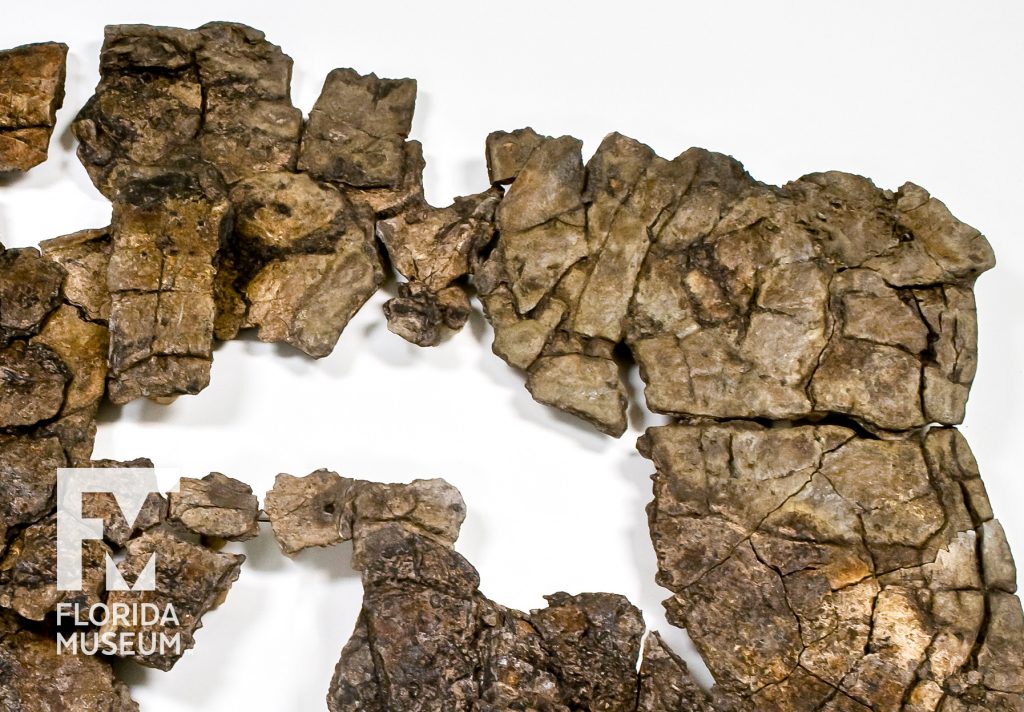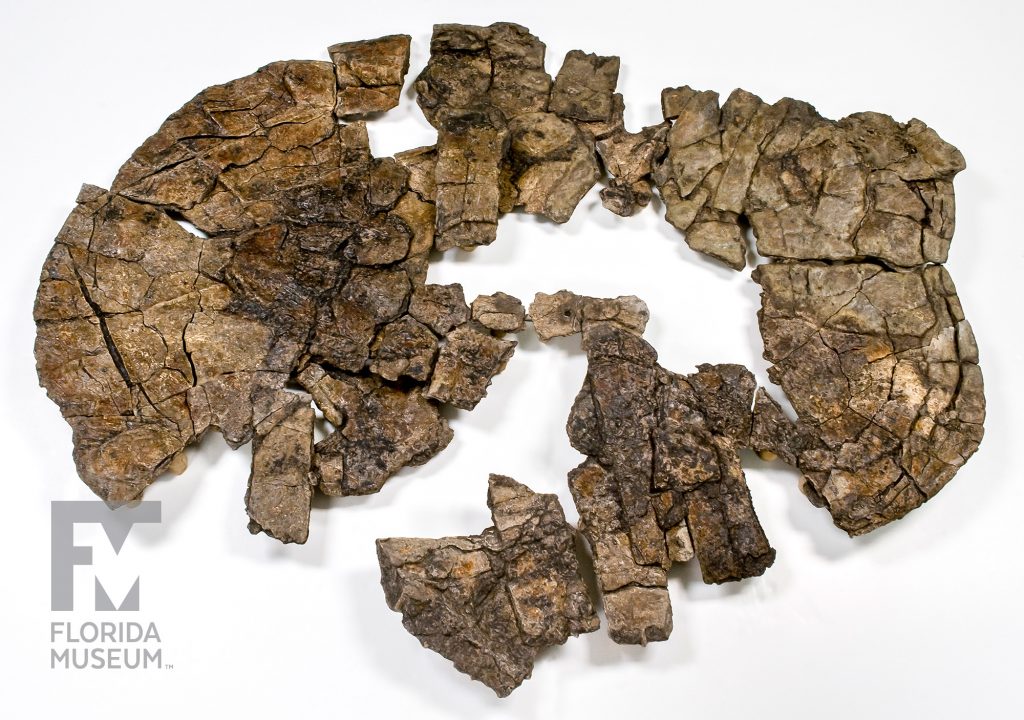This massive fossil is the largest freshwater turtle species found from the Paleocene (66–56 million years ago). Its unusually thick shell would deter most predators, but bite marks show that dyrosaurids at least tried.
Summary
Cofrin’s Side-necked Turtle Carapace (Carbonemys cofrinii)
From La Guajira, Colombia
Lived ~60–58 million years ago
Collection
Story
Carbonemys is a very large freshwater turtle that we found in the same rocks as Titanoboa at the Cerrejón coal mine in northern Colombia. And the first thing that struck us when we discovered this animal was that it, like Titanoboa, was so incredibly large and in fact, it is the largest freshwater turtle known on the planet for this time at 58 million years ago. Also, what’s very interesting about Carbonemys is that like Titanoboa, it’s related to animals that are living in the Amazon today. So Carbonemys is a Pleurodira turtle — that means it is a side-necked turtle — and these are the kinds of turtles that you see in the Amazon today, however they are much smaller.
We estimate that Carbonemys would’ve been around five and a half feet long — which is smaller than some sea turtles that you find today but for freshwater turtles that’s a very large freshwater turtle — and you don’t see turtles becoming larger than that even in the fossil record until some tens of millions of years later. So it’s the undisputed largest turtle during that 10-million-year interval of time after the extinction of the dinosaurs.
Another interesting thing about Carbonemys are the puncture marks that we see on its shell. We can see these depressions pushed in the shell that look very much like the types of puncture marks that you see on the shells of side-necked turtles that have been bitten by crocodiles in ecosystems today. While we can’t take a time machine and go back and actually see this happening, it’s not so far-fetched to say that the crocodiles during this time were trying to eat these turtles. Another interesting thing about the shells of these side-necked turtles from Cerrejón is that they are very thick, and this may have been in part an adaptation to avoid predation by these giant crocodilians in their ecosystem. The turtles like Carbonemys here, when they were younger, probably formed part of the diet of the largest predators in this ecosystem. If you go to the Amazon today, for example, the side-necked turtles are often preyed upon by the Anacondas so it wouldn’t be completely out of the question that Titanoboa might have eaten some of these side-necked turtles, although probably not a Carbonemys of this size.
Jonathan Bloch
Curator, Vertebrate Paleontology*
Florida Museum of Natural History
Exhibit
On display Sept. 23, 2017-Jan. 7, 2018, Rare, Beautiful & Fascinating: 100 Years @FloridaMuseum celebrated the Museum’s rich history. Each Museum collection was asked to contribute its most interesting items and share the stories that make them special. Though the physical exhibit is closed, this companion website remains online, providing an opportunity to experience the Florida Museum’s most treasured specimens.
Exhibit Area: Looking Ahead
Theme: Fieldwork
 Want to see more? Explore more than 300 breathtaking color photos of plants, animals, fossils and cultural heritage materials from the Florida Museum of Natural History’s collections in the award-winning book All Things Beautiful available from the University Press of Florida.
Want to see more? Explore more than 300 breathtaking color photos of plants, animals, fossils and cultural heritage materials from the Florida Museum of Natural History’s collections in the award-winning book All Things Beautiful available from the University Press of Florida.
*This title was accurate at the time the exhibit was on display in 2017. Please visit the collection website to verify current staff and student information.

